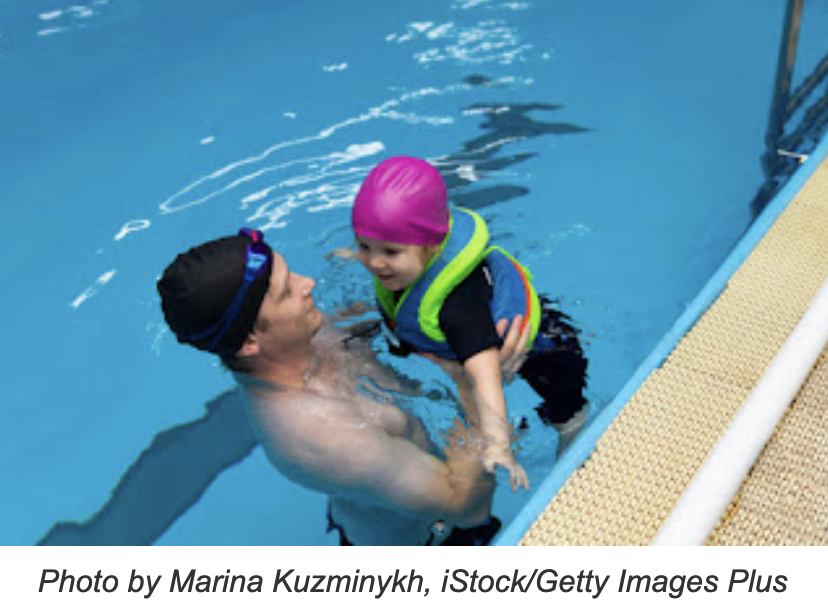How to keep your family safe in pools, lakes, streams and oceans

By Sherri Hannan
Safe Kids Fayette County
The American Academy of Pediatrics recommends swimming lessons as a layer of protection against drowning; that can begin for many children starting at age 1. Even if your child has had lessons, they should never be unsupervised in water. Toddlers are the highest risk for drowning; their curious nature will lead them to explore areas that are dangerous for them but seem innocuous to adults. A good rule is “touch supervision,” meaning young children should always be close enough to touch when around water.
- Choose a safe place to swim. Ensure that swimming pools are enclosed by a fence on all sides. In oceans, be aware of strong currents and waves.
- Instead of “floaties,” have your child wear a Coast Guard-approved life jacket in and around water.
- Watch kids when they are in or around water without being distracted. Young children can drown in as little as one inch of water, so it’s important to keep them within an arm’s reach of an adult. Assign a “water watcher,” an adult who will pay constant attention to children in the water. Switch off with another adult for breaks.
- Children should wear brightly colored swimsuits that contrast against the water, such as yellow, orange and pink.
- Empty small kiddie pools immediately after use. Store them upside down and out of children’s reach.
Kentucky’s numerous lakes are a fun summer getaway. However, teens and adolescents have a greater risk of death or injury in natural bodies of water because they overestimate their abilities and underestimate dangerous situations. They may feel pressure from their friends even if they don’t have strong swim skills or experience. They may also seek out unsafe areas such as waterfalls and rivers. Encourage them to only swim where lifeguards are present.
Familiarize yourself with the signs of drowning. It’s not the dramatic splashing you see in movies but is actually subtle and silent. If you see someone vertical in the water with their mouths near the surface, and they appear to be “climbing an invisible ladder,” get them out of the water as soon as possible.
One of the best ways to prepare for summer safety is to learn CPR. Contact your local community center or the Red Cross to find certification courses near you.
This is the latest weekly health column provided by the University of Kentucky Office of Public Relations and Strategic Communications.